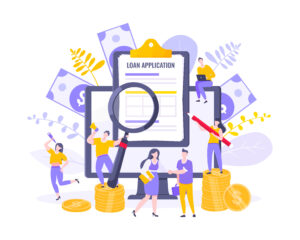 After years of being paused due to COVID-19 relief, student loan repayments are set to restart 60 days after June 30, or 60 days after the Supreme Court rules on President Joe Biden’s debt forgiveness plan if that date is sooner. After the 2020 forbearance period ends, borrowers will need to resume their monthly student loan payments. When that happens, many households will be thrown into a tight spot as their budgets become more restricted. Ironically, earners making high salaries can find themselves even worse off as they are expected to contribute the most toward their loans, especially if they’ve chosen an income-driven repayment plan. To help you avoid having your finances thrown completely off track by repayment, here’s how to start preparing.
After years of being paused due to COVID-19 relief, student loan repayments are set to restart 60 days after June 30, or 60 days after the Supreme Court rules on President Joe Biden’s debt forgiveness plan if that date is sooner. After the 2020 forbearance period ends, borrowers will need to resume their monthly student loan payments. When that happens, many households will be thrown into a tight spot as their budgets become more restricted. Ironically, earners making high salaries can find themselves even worse off as they are expected to contribute the most toward their loans, especially if they’ve chosen an income-driven repayment plan. To help you avoid having your finances thrown completely off track by repayment, here’s how to start preparing.
Start Saving as Much as You Can
When the loan repayments start again, you’ll want to call your servicer and make arrangements ASAP. Before that happens, learn how to handle your money and start putting away as much as you can so you have a safety net to begin making payments. When you’re struggling financially, putting away hundreds of dollars a month can be out of your ability, and that’s okay. Focus on saving what you can, even if it’s as small as skipping a $5 drink out to keep it in your account.
Research Student Loan Repayment Plans
There are several types of repayment plans that each come with their own pros and cons. Learning about the various options to repay student loan debt can ultimately make you a more informed borrower, and possibly help you save on interest. Remember that the payment plan you were using before COVID may no longer work for your budget. Consider running some loan simulations before you switch to a plan, so you can get a good idea of how much you’d need to pay per month.
Consider Consolidation
Consolidation is a great way to streamline your federal student loan payments It can help you maintain federal benefits and manage your loans more easily, even if it doesn’t necessarily decrease your monthly payment. Also, you can’t pick your interest rate, so some people would wind up paying more over their loan’s lifetime. Consolidation is not the same as student loan refinance. Refinancing is the act of taking out a private loan to pay off all our outstanding balances, then paying off that loan in their place. Check out on online guide on the pros and cons of consolidating student loans for more info.
Contact Your Loan Servicer Ahead of Time
It can be helpful to revisit your student loan debt with your servicer prior to starting repayment.
They can tell you exactly how much you owe, which loans generate the highest interest, and answer any questions you have. They may also be able to offer some relief options if you are experiencing financial hardship and need to postpone payments further for a few months. The best thing to do is always reach out and be proactive about paying back your debt. Even though you may have student loans for years to come, they can be managed with the right approach.


